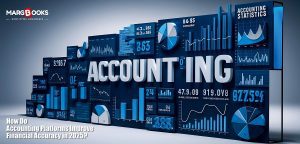Establishment expenses play a crucial role in the financial health and reporting of a business. These expenses, often termed as operating expenses, cover a wide range of costs associated with the daily functioning of a company. This blog aims to provide a comprehensive understanding of establishment expenses in final accounts, highlighting their importance, classification, and impact on the overall financial statements. We will also discuss how businesses can manage these expenses efficiently to enhance profitability.
What Are Establishment Expenses?
Establishment expenses refer to the costs incurred by a business in the process of running its day-to-day operations. These expenses are essential for maintaining the operational capability of a business and ensuring smooth functioning. They include costs such as rent, utilities, salaries, office supplies, maintenance, and other similar expenditures.
Examples of Establishment Expenses
- Rent and Utilities: Payments for office space, electricity, water, and other utilities.
- Salaries and Wages: Compensation paid to employees, including bonuses and benefits.
- Office Supplies: Costs of stationery, printing, and other office materials.
- Maintenance and Repairs: Expenses related to the upkeep of office equipment and facilities.
- Insurance: Premiums for policies covering property, liability, and employee health.
- Communication Expenses: Costs for telephone, internet, and other communication services.
- Travel and Entertainment: Expenses for business travel, client meetings, and employee entertainment.
Importance of Establishment Expenses in Final Accounts
Establishment expenses are a significant component of a business’s operating costs and directly affect its profitability. Proper accounting and management of these expenses are vital for accurate financial reporting and analysis. Here’s why they are important:
- Reflecting True Operational Costs: Accurate recording of establishment expenses ensures that the financial statements reflect the true cost of running the business.
- Budgeting and Forecasting: Understanding these expenses helps in creating realistic budgets and financial forecasts.
- Cost Control: Identifying and analyzing these costs can help businesses implement cost-control measures, leading to improved profitability.
- Tax Deductions: Many establishment expenses are tax-deductible, reducing the overall tax liability of the business.
- Investor Confidence: Transparent reporting of operating expenses builds investor confidence and trust in the financial health of the business.
Classification of Establishment Expenses
Establishment expenses can be classified into several categories based on their nature and function. Understanding these categories helps in better accounting and financial analysis.
Fixed and Variable Expenses
- Fixed Expenses: These are costs that remain constant regardless of the business activity level. Examples include rent, insurance premiums, and salaries of permanent staff.
- Variable Expenses: These costs fluctuate with the level of business activity. Examples include utility bills, office supplies, and temporary staff wages.
Direct and Indirect Expenses
- Direct Expenses: Costs that can be directly attributed to a specific business activity or product. For example, raw materials used in manufacturing.
- Indirect Expenses: Costs that cannot be directly linked to a specific activity but are necessary for overall operations. Examples include rent, utilities, and administrative salaries.
Controllable and Uncontrollable Expenses
- Controllable Expenses: Costs that can be managed or influenced by the business management. For instance, marketing expenses and office supplies.
- Uncontrollable Expenses: Costs that cannot be easily controlled by the business, such as rent increases and statutory taxes.
Accounting for Establishment Expenses
Proper accounting for establishment expenses is crucial for accurate financial reporting. These expenses are recorded in the Profit and Loss (P&L) statement, impacting the net profit or loss of the business. Here’s how they are accounted for:
Recording in the P&L Statement
Establishment expenses are recorded under the operating expenses section of the P&L statement. Each expense category is listed separately to provide a clear picture of the cost structure. For example:
- Rent and Utilities
- Salaries and Wages
- Office Supplies
- Maintenance and Repairs
- Insurance
- Communication Expenses
Accrual Accounting
Most businesses use the accrual basis of accounting, where expenses are recorded when incurred, regardless of when the payment is made. This method provides a more accurate representation of the financial position of the business.
Allocation of Expenses
In some cases, establishment expenses may need to be allocated across different departments or cost centers. This allocation helps in assessing the performance and cost efficiency of various segments of the business.
Impact on Financial Statements
The treatment of establishment expenses has a direct impact on various financial statements, including the P&L statement, balance sheet, and cash flow statement.
Profit and Loss Statement
As mentioned earlier, establishment expenses are recorded in the P&L statement and directly reduce the net profit of the business. High operating expenses can lead to lower profitability, even if the revenue is substantial.
Balance Sheet
Some establishment expenses, such as prepaid expenses and accrued liabilities, also appear on the balance sheet. Prepaid expenses are recorded as current assets, while accrued liabilities are listed as current liabilities.
Cash Flow Statement
Establishment expenses affect the operating activities section of the cash flow statement. Cash outflows for operating expenses reduce the net cash flow from operating activities.
Managing Establishment Expenses
Effective management of establishment expenses is essential for maintaining profitability and ensuring long-term financial health. Here are some strategies businesses can adopt:
Cost Control Measures
Implementing cost control measures can help reduce unnecessary expenses and improve efficiency. For example:
- Energy Efficiency: Adopting energy-efficient practices can reduce utility bills. This might include using energy-efficient lighting, installing programmable thermostats, and ensuring that office equipment is turned off when not in use.
- Bulk Purchasing: Buying office supplies in bulk can lead to discounts. Large quantities often come with lower per-unit costs.
- Outsourcing Non-Core Activities: Outsourcing activities like janitorial services or IT support can reduce costs. By outsourcing, businesses can avoid the expenses associated with hiring and training in-house staff for these functions.
- Telecommuting: Encouraging remote work can lower office space and utility expenses. Reducing the need for large office spaces can lead to significant savings.
Budgeting and Monitoring
Creating a detailed budget for establishment expenses helps in monitoring and controlling them. Regularly comparing actual expenses against the budget can identify variances and areas for improvement. This process ensures that spending stays within the planned limits and helps in identifying any unexpected increases in costs.
Negotiating Contracts
Negotiating better terms with suppliers and service providers can lead to cost savings. For example, negotiating lower rent or better rates for utilities and communication services can significantly reduce monthly expenses. Establishing long-term contracts with favorable terms can also lock in lower rates for the future.
Regular Maintenance
Investing in regular maintenance of equipment and facilities can prevent costly repairs and replacements in the long run. Preventive maintenance ensures smooth operations and reduces unexpected breakdowns. For instance, regular servicing of HVAC systems can prevent expensive repairs and ensure efficient energy use.
Employee Training
Training employees to be mindful of resource usage can lead to significant savings. Simple practices like turning off lights and equipment when not in use, reducing paper usage, and efficient use of office supplies can contribute to cost reduction. Employees can be encouraged to find and suggest cost-saving measures, creating a culture of financial prudence.
Technology Utilization
Leveraging technology can streamline operations and reduce costs. For instance, using digital communication tools can lower travel expenses, and automation can reduce the need for manual labor. Cloud-based services can also reduce the need for physical infrastructure, leading to cost savings on hardware and maintenance.
Establishment Expenses in Different Industries
The nature and proportion of establishment expenses can vary significantly across different industries. Understanding these variations can help businesses tailor their cost management strategies.
Manufacturing Industry
In the manufacturing sector, establishment expenses might include costs related to factory maintenance, utilities, and worker salaries. Energy consumption and equipment upkeep are significant cost drivers in this industry. The focus is often on maintaining production efficiency and minimizing downtime.
Retail Industry
For retail businesses, establishment expenses include rent for storefronts, utilities, employee wages, and marketing expenses. The cost of maintaining an appealing shopping environment and customer service are also considerable. Retailers must balance these costs with the need to attract and retain customers.
Service Industry
Service-oriented businesses, such as consulting firms or law practices, incur establishment expenses like office rent, utilities, communication costs, and professional development for employees. Travel expenses for client meetings and conferences can also be significant. These businesses often focus on maintaining a professional image and investing in their workforce.
Technology Industry
In the tech industry, establishment expenses might encompass office rent, utilities, high salaries for skilled workers, and costs for maintaining data centers and IT infrastructure. Investment in cutting-edge technology and software is also a substantial part of these expenses. Staying ahead in technology and innovation is crucial for these businesses.

Tax Implications of Establishment Expenses
Understanding the tax implications of establishment expenses is essential for optimizing tax liability. Many of these expenses are tax-deductible, providing potential savings for businesses.
Deductible Expenses
Most establishment expenses, such as rent, utilities, salaries, and office supplies, are fully deductible from business income, reducing the taxable income and overall tax liability. Keeping accurate records and receipts is crucial for claiming these deductions.
Non-Deductible Expenses
Some expenses, such as fines and penalties, personal expenses, and capital expenditures, are not deductible. Businesses need to distinguish between deductible and non-deductible expenses to comply with tax regulations. Misclassifying expenses can lead to tax penalties and issues with tax authorities.
Depreciation and Amortization
Expenses related to long-term assets, such as equipment and buildings, are not fully deductible in the year they are incurred. Instead, these costs are capitalized and depreciated or amortized over their useful life, spreading the tax benefit over several years. This process ensures that the cost of an asset is matched with the revenue it generates over time.
Challenges in Managing Establishment Expenses
While managing establishment expenses is crucial, businesses often face several challenges in this area. Identifying and addressing these challenges can lead to better financial management and improved profitability.
Tracking and Recording
Accurate tracking and recording of establishment expenses can be challenging, especially for businesses with multiple locations or departments. Implementing robust accounting systems and software can help streamline this process. Regular audits and reconciliations can also ensure accuracy and compliance.
Variability and Unpredictability
Some establishment expenses, such as utilities and maintenance costs, can be unpredictable and vary significantly from month to month. This variability can complicate budgeting and financial planning. Businesses can use historical data and trends to make more accurate forecasts and set aside contingency funds for unexpected expenses.
Rising Costs
Inflation and rising costs of rent, utilities, and salaries can put pressure on a business’s finances. Staying proactive and seeking ways to mitigate these increases, such as long-term contracts or energy-efficient investments, can help. Regularly reviewing and adjusting budgets can also ensure that cost increases are managed effectively.
Compliance and Regulations
Different industries and regions have various regulations regarding operating expenses. Staying compliant with these regulations while managing costs effectively requires careful planning and monitoring. Non-compliance can lead to fines, penalties, and damage to the business’s reputation.
Balancing Cost and Quality
While reducing costs is essential, businesses must balance cost-cutting measures with maintaining quality and operational efficiency. Compromising on quality can lead to higher costs in the long run due to inefficiencies and poor customer satisfaction. Businesses must evaluate the impact of cost-saving measures on overall performance and customer experience.
Best Practices for Managing Establishment Expenses
Adopting best practices for managing establishment expenses can lead to significant cost savings and operational efficiency.
Implementing Regular Audits
Conducting regular audits of establishment expenses helps identify inefficiencies, waste, and potential savings. Audits can uncover areas where costs can be reduced without affecting operations. They also ensure compliance with internal policies and external regulations.
Leveraging Financial Software
Using financial software for expense tracking and reporting can enhance accuracy and provide real-time insights into spending patterns. These tools can automate processes, reduce errors, and save time. They also provide detailed reports and analytics that can help in making informed financial decisions.
Establishing Expense Policies
Creating clear policies and guidelines for managing establishment expenses ensures consistency and control. Policies should cover areas such as expense approvals, reimbursement procedures, and spending limits. Regularly updating and communicating these policies to employees can ensure adherence and accountability.
Encouraging Employee Involvement
Involving employees in cost-saving initiatives can lead to innovative ideas and a culture of cost-consciousness. Regularly communicating the importance of managing expenses and recognizing contributions can motivate employees to contribute to cost-saving efforts. Employee feedback and suggestions can also provide valuable insights into potential areas for improvement.
Reviewing Contracts Regularly
Regularly reviewing contracts with suppliers and service providers can identify opportunities for renegotiation and cost reduction. Businesses should ensure they are getting the best possible terms and value for money. Building strong relationships with suppliers can also lead to better deals and collaborations.
Conclusion
Establishment expenses are a vital component of a business’s financial management and reporting. Proper accounting and management of these expenses can significantly impact a company’s profitability and financial health. By understanding the nature and classification of these expenses, businesses can implement effective cost-control measures, optimize tax benefits, and enhance overall operational efficiency.
In summary, establishment expenses encompass a wide range of costs necessary for the day-to-day operations of a business. Accurate recording and management of these expenses are crucial for realistic budgeting, financial analysis, and maintaining profitability. By adopting best practices, leveraging technology, and involving employees, businesses can manage their establishment expenses effectively and ensure long-term financial stability.
Also Read:
- What Should You Look for in Accounting Programs for Small Business?Depending on a good selection of Accounting Programs for Small Business, you can succeed or not. The small business owners can easily keep a record of expenditure, automate their bills, and remain compliant with appropriate tools. Nevertheless, not every accounting… Read more: What Should You Look for in Accounting Programs for Small Business?
- How Do Accounting Platforms Improve Financial Accuracy in 2025?The financial accuracy is more than just a buzzword – it’s the backbone of smart decision-making. As we step further into 2025, businesses are no longer relying solely on manual bookkeeping or outdated systems. Instead, they’re embracing modern accounting platforms… Read more: How Do Accounting Platforms Improve Financial Accuracy in 2025?
- Why Is It Important to Understand the Account Golden Rules with Example?When it comes to managing business finances in India, understanding the account golden rules with examples is essential, especially for startups, small business owners, and even freelancers. No matter how big or small your venture is, the fundamentals of accounting… Read more: Why Is It Important to Understand the Account Golden Rules with Example?
- Why Are the Accounting Three Golden Rules Still Relevant Today?The various accounting practices continue to play a crucial role in managing the financial health of organizations. Whether it’s a small startup or a multinational corporation, accurate financial reporting and decision-making are vital. While technology has drastically transformed accounting, some… Read more: Why Are the Accounting Three Golden Rules Still Relevant Today?
Frequently Asked Questions
What are establishment expenses in final accounts?
Establishment expenses are the costs a business incurs to keep its daily operations running smoothly. These include expenses such as rent for the office space, utility bills like electricity and water, salaries and wages for employees, office supplies like paper and pens, maintenance costs for repairing equipment, and insurance premiums. These expenses are recorded in the Profit and Loss statement to give a clear picture of the operational costs of running the business.
How do establishment expenses affect profitability?
Establishment expenses directly reduce the net profit of a business. When a business spends money on things like rent, utilities, and salaries, it has less money left over as profit. Managing these costs effectively can help increase profitability. If a business has high operating expenses but also high revenue, controlling these costs can still lead to better profits. It’s important to keep these expenses in check to ensure the business remains profitable.
Can establishment expenses be deducted for tax purposes?
Yes, many establishment expenses can be deducted from a business’s income for tax purposes. This means that expenses such as rent, utilities, salaries, and office supplies can be subtracted from the total income of the business, reducing the amount of income that is taxed. This helps lower the overall tax bill for the business. Accurate record-keeping of these expenses is essential to ensure they are properly deducted during tax filing.
How are establishment expenses classified?
Establishment expenses are classified into different categories based on their nature. Fixed expenses are costs that stay the same every month, like rent. Variable expenses change based on how much the business uses, like electricity bills. Direct expenses are linked to specific business activities, like raw materials for production. Indirect expenses are general costs that support the overall operation, like office supplies. Controllable expenses can be managed by the business, like advertising costs, while uncontrollable expenses are harder to change, like taxes.
Why is budgeting for establishment expenses important?
Budgeting for establishment expenses helps businesses plan and monitor their spending. By creating a detailed budget, a business can set limits on how much it will spend on things like rent, utilities, and office supplies. This helps in tracking actual expenses against the planned budget, identifying where the business is overspending or saving money. Regularly comparing these figures can highlight areas for improvement and ensure that the business does not run out of money unexpectedly.
What are some examples of establishment expenses?
Examples of establishment expenses include the rent paid for office space, the electricity and water bills, salaries and wages for employees, office supplies like pens, paper, and ink, maintenance costs for keeping equipment in good working order, insurance premiums for protecting against risks, communication expenses like phone and internet bills, and travel costs for business trips. All these expenses are necessary to keep the business operating on a daily basis.
How can businesses manage establishment expenses effectively?
Businesses can manage establishment expenses by adopting several strategies. They can implement cost control measures such as using energy-efficient lighting to reduce utility bills, buying office supplies in bulk to get discounts, outsourcing tasks like cleaning services to reduce staffing costs, and encouraging remote work to save on office space. Regular audits can help identify wasteful spending. Creating a detailed budget and regularly comparing it with actual spending can highlight areas for cost savings. Using financial software can automate tracking and provide real-time insights into expenses.
What challenges do businesses face in managing establishment expenses?
Businesses often face several challenges in managing establishment expenses. Keeping accurate records of all expenses can be difficult, especially for companies with multiple locations or departments. Some costs, like utility bills, can be unpredictable and vary each month, making budgeting hard. Rising costs for rent, utilities, and salaries can put financial pressure on the business. Ensuring compliance with regulations adds another layer of complexity. Balancing the need to reduce costs without compromising on quality and efficiency is also challenging.
How do establishment expenses impact financial statements?
Establishment expenses impact various financial statements. In the Profit and Loss statement, these expenses are listed under operating expenses and reduce the net profit of the business. Some establishment expenses also appear on the balance sheet. For example, prepaid expenses, such as rent paid in advance, are recorded as current assets, while accrued expenses, like unpaid utility bills, are recorded as current liabilities. In the cash flow statement, cash outflows for operating expenses reduce the net cash flow from operating activities, affecting the business’s overall liquidity.
What is the role of regular audits in managing establishment expenses?
Regular audits play a crucial role in managing establishment expenses. They help ensure that all expenses are accurately recorded and that spending aligns with the budget. Audits can identify areas where the business is overspending or where there is waste, providing opportunities for cost savings. They also ensure compliance with internal policies and external regulations, reducing the risk of financial penalties. Regular audits can uncover inefficiencies and highlight areas for improvement, helping the business manage its expenses more effectively and improve overall financial health.





